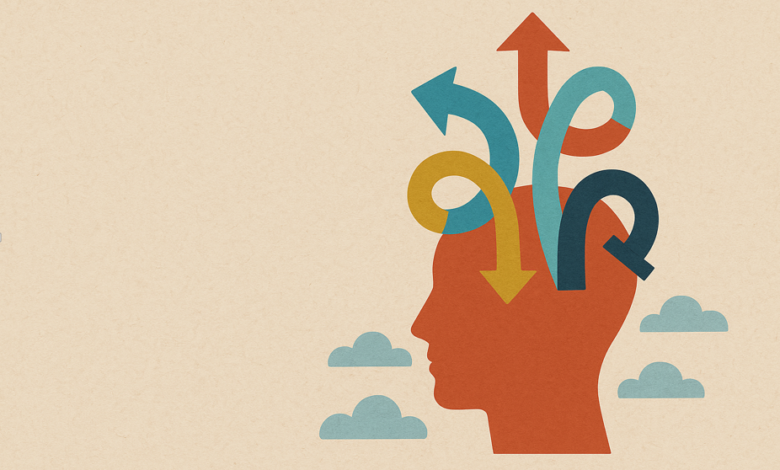Adaptability in a Changing World: How to Develop Flexible Thinking and Behaviour

We live in an era of rapid transformation. Almost every day, we’re faced with new challenges that test our resilience and force us to adjust. Nowadays, success is no longer determined solely by IQ, ambition, or even perseverance. It now depends greatly on our ability to embrace change and adapt to it quickly and effectively.
Let’s explore why adaptability has become a defining skill of our time, and how we can develop it through practical, science-based strategies.
Why Adaptability Is a Core Competency Today
Adaptability refers to the ability to adjust to shifting circumstances, whether they’re environmental, professional, or personal. It is essential to stay mentally agile, open to learning, and ready to approach unfamiliar situations with a clear and curious mind.
Also known as “adaptive intelligence” or AQ (Adaptability Quotient), this skill reflects our inner capacity to intuitively select the right response for a situation or to design an entirely new course of action. High AQ helps us stay effective in turbulent conditions, demonstrating resilience and clarity under stress.
Some key signs of adaptability include:
Fast Learning
People with high adaptability are quick to grasp new tools, methods, and technologies. They aren’t intimidated by the unfamiliar. Instead, they pursue learning with purpose and energy.
Flexible Thinking
Adaptable individuals are willing to let go of outdated processes. If the traditional approach fails, they’re ready to pivot and try something innovative. They’re driven more by results than by rigid structure. For example, while placing a bet, these people can choose an underdog if their analysis demonstrates that that person or team should win.
Creative Problem-Solving
These people thrive under pressure. They seek original solutions, take calculated risks, and aren’t afraid of accountability. Their thinking is both critical and constructive.
Strong Team Collaboration
They know how to work with others, valuing diverse perspectives. Adaptable team members communicate well, delegate wisely, and support healthy group dynamics through thoughtful dialogue.
While it may seem like adaptable people possess some sort of rare talent, this isn’t the case. They make mistakes like everyone else. They are unique in that they see uncertainty as an opportunity rather than a threat. Change doesn’t destabilize them; it fuels their growth.
Conversely, low AQ is frequently associated with interpersonal conflict, poor stress tolerance, and even burnout. A fixed mindset toward uncertainty can result in irritability, blame-shifting, and emotional instability, all of which hinder productivity and relationships.
Fixed vs. Growth Mindset: How Thinking Shapes Reactions
Psychologists generally categorize mindsets into two types that greatly influence our approach to learning and growth: fixed and growth mindsets.
- A fixed mindset believes that skills are natural and unalterable. These individuals tend to avoid challenges for fear of failure or looking weak.
- A growth mindset, on the other hand, believes that skills can be developed through effort, feedback, and experience. People with this outlook welcome challenges as stepping stones.
How They Differ in Action:
- Facing Difficulty: Fixed-mindset individuals often avoid tough situations, while growth-oriented thinkers embrace them as learning opportunities.
- Dealing with Mistakes: Fixed thinkers see mistakes as personal failings. Growth thinkers view failure as part of the process.
- Motivation: Those with a fixed view may lose interest in learning, thinking it won’t help. Growth-oriented people are driven by progress and personal development.
Most of us are not purely one or the other. A person may show a growth mindset when it comes to academics but struggle with a fixed mindset in creative areas. The good news? You can cultivate a more flexible mindset by making conscious shifts in how you think, speak to yourself, and respond to feedback.
A growth mindset is a powerful tool for boosting long-term success in your career, your personal life, and your well-being.
Getting Comfortable with Discomfort: Embracing Change
Everybody wants stability, but too much ease can be dangerous. A predictable routine may seem safe, but over time, it can hinder creativity and growth. To keep progressing, we need to stretch ourselves regularly, even when it feels awkward.
Strategies to Step Out of Your Comfort Zone:
- Try New Experiences. Challenge your brain with new cuisines, travel destinations, puzzles, or languages. These behaviours increase brain plasticity and broaden your perspective.
- Build Perseverance. Resilience doesn’t happen overnight. Push through setbacks, and you’ll grow more capable with each hurdle you overcome.
- Manage Stress Proactively. Mindfulness, meditation, and exercise are proven to lower stress hormones and improve decision-making in uncertain environments.
- Engage with Diverse People. Talk to people from different backgrounds or age groups. Exposure to fresh ideas enhances empathy, communication, and adaptability.
Small, consistent steps help stretch your limits without causing overwhelm. Something as simple as taking a new route to work or joining a community group outside your usual social circle can increase confidence and resilience.
Every unfamiliar situation you encounter, whether it’s navigating cultural norms abroad or learning a new platform at work. adds to your psychological toolkit.
Relearning How to Learn: Embracing Lifelong Reskilling
Today’s job market requires not only learning but relearning. Industries shift rapidly, and lifelong learning is no longer optional. It’s how we future-proof our careers.
Reinvention doesn’t mean starting from scratch. It means transferring your existing skills into new contexts and expanding your knowledge along the way.
A Step-by-Step Guide to Career Pivoting:
- Assess Your Strengths. List the transferable skills you’ve developed: problem-solving, communication, leadership, etc. Where else could they apply?
- Research Career Trends. Identify industries that are growing and align with your strengths. Use labour market reports, job boards, or career coaching resources.
- Start Training. Choose short courses or certification programs tailored to your target field. Many are now available online and part-time.
- Get Real-World Practice. Volunteer, freelance, or intern. These opportunities help you build a portfolio and gain confidence in your new skillset.
A well-crafted resume that highlights your growth, motivation, and ability to adapt can set you apart, even if you’re moving into a new sector.
Building Emotional Resilience: Facing Uncertainty with Confidence
Adaptability is deeply emotional. The modern world brings a flood of stressors: economic shifts, global crises, health risks, and more. To navigate this, we need strong internal foundations.
Start With Emotional Awareness
Many people ignore or suppress uncomfortable emotions, hoping they’ll go away. In reality, avoidance builds long-term tension. Resilience begins when we name and accept how we feel.
Pay attention to signs of emotional strain: fatigue, irritability, brain fog, or a racing heart. These are messages from your body. Listen to them.
Build Your Emotional Toolkit
- Own Your Feelings. Don’t judge your emotions; observe them. Recognizing sadness, fear, or anger is the first step toward processing them.
- Prioritize Physical Needs. Sleep, exercise, and nutrition are cornerstones of mental health. Even small changes in diet or activity can boost mood and focus.
- Set Clear Goals. Having specific, time-bound goals gives you structure in uncertain times. A goal creates momentum and helps reduce overwhelm.
Resilience considers navigating difficulties with courage, clarity, and care for yourself and others.





